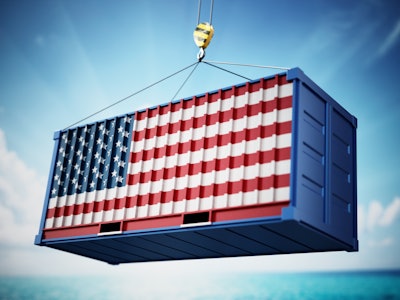
The importance of strategic sourcing, in general, was underscored by globalization, China’s entry into the WTO, NAFTA, private equity’s unrelenting focus on efficiency and the dramatic growth in outsourcing. A lot of shareholder value was created and the industry got used to the savings.
The first inkling of things to come may have been the 2018 China tariffs. Sudden and drastic supply chain shifts resulted in selected industries as buyers moved production across Asia in a matter of months. It resembled a mad game of “musical chairs,” as producers competed to secure scarce non-China manufacturing capacity all over Asia, but it proved that it could be done.
Waking up to resiliency
Of course, the Coronavirus disease (COVID-19) changed everything. Global supply chains ground to a halt in 2020, and as the global economy restarted, shortages, inflation and the spectre of geopolitical conflict with China have made the need for more supply chain resiliency and less China dependence obvious. Corporations understand that small purchase price differences mean little sales are lost due to unavailability of even the smallest parts required to make the end product. Insourcing and reshoring are largely knee-jerk reactions that are not appropriate except in very special circumstances. A balanced approach is needed to assess and reconfigure the supply chain for cost and more resiliency, one that understands the explicit tradeoffs for a given risk tolerance and has solid contingency plans in place. Global suppliers remain the dominant source of innovation and capacity and the time to strategically re-source your supply chain for resiliency and cost is now.
Understanding supply chain risks
Just as in finance, supply chain managers must differentiate between systematic and specific risk. Systematic events that impact entire global markets are hard to plan for, rare and prohibitively expensive to guard against. Specific risk, such as concentrated production in a particular geography or heavy reliance on single-source suppliers, is where purchasing professionals should focus. In some ways, the 2011 Japanese Tsunami that wiped out a key Sony factory and eliminated magnetic tapes overnight is a better model than the COVID-19 global pandemic. Purchasing executives should:
● Understand their suppliers’ capacity at the physical plant level.
● Perform an audit of suppliers’ supply chains and identify any vulnerabilities.
● Source the entire category spend, including the 80/20 tail and likely future SKUs.
● Have long-term, a priori pricing in place to avoid price squeezes should inflation persist.
● Scenario model the total cost impact of supply chain disruptions.
● Develop a “risk-adjusted” cost framework and communicate across your organization.
How to build a more resilient supply chain
Category sourcing RFP processes often apply the 80/20 rule and focus on the most frequently purchased items in a category, leaving the tail unsourced and unpriced. Suppliers know this, and in many cases where most of the supplier’s profit came from the tail, change orders or the replacement of sourced items with never-sourced items having only slightly varying specs.
The way to avoid this outcome is to organize the RFP effort around a “category pricing model” that captures the key cost drivers of the supplier industry and allows a buyer to compute a total price for an individual item using a “process pricing approach” with formulae, specs, component prices and indices that are a good proxy for the industry cost curve. Note that this is not the same as a “cost-plus” model or a “should cost” model for an individual supplier, but rather an a priori structured pricing agreement between the buyer and the supplier that governs pricing across all the items in the category. Buyers can use this technique to establish and competitively maintain “efficient pricing frontiers” across a range of categories.
Often, the top items are still priced as catalog items, but having an understanding of the category cost components allows for better negotiation and resiliency analysis on the non-catalog items. It’s one thing to have alternative sources, but quite another to have priced alternatives when things go wrong.
Analytically challenging process
Given the significant financial benefits of an optimized supply chain and the large amounts of data analysis required to embark on a sophisticated strategic sourcing effort, it almost always makes sense to supplement the organization with external experts and leverage sourcing technology.















![Pros To Know 2026 [color]](https://img.sdcexec.com/mindful/acbm/workspaces/default/uploads/2025/08/prostoknow-2026-color.mduFvhpgMk.png?ar=16%3A9&auto=format%2Ccompress&bg=fff&fill-color=fff&fit=fill&h=135&q=70&w=240)
